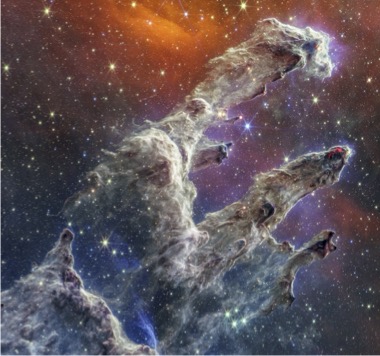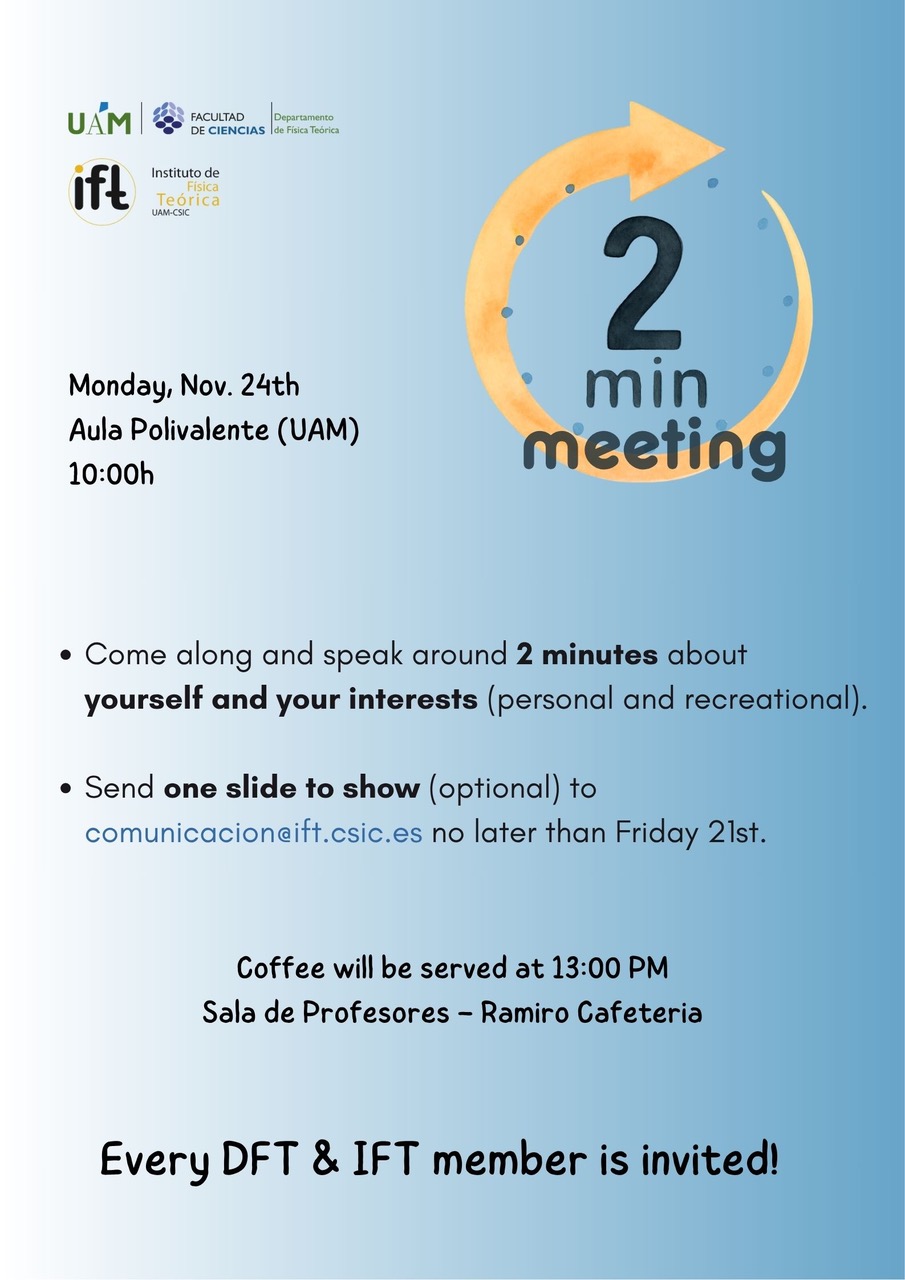El Departamento de Física Teórica (DFT) de la UAM se fundó a principios de la década de 1970 con el objetivo de alcanzar la excelencia científica a escala internacional. Sus áreas de investigación abarcan las partículas elementales, la física experimental de altas energías, física nuclear, astronomía y la astrofísica, astropartículas, cosmología, gravedad cuántica y tecnologías cuantifica. El departamento cuenta con más de 30 miembros en plantilla, además de numerosos investigadores postdoctorales, doctorandos y estudiantes de máster. Para fomentar la producción científica y la investigación interdisciplinar, los miembros del DFT han fundado dos institutos de investigación complementarios: el Instituto de Física Teórica (IFT, fundado en 2003) y el Centro de Investigación Avanzada en Física Fundamental (CIAFF, fundado en 2017). La fuerte conexión del DFT con ambos permite a los investigadores aprovechar valiosos recursos humanos y materiales.
El Centro de Investigación Avanzada en Física Fundamental de la Universidad Autónoma de Madrid (CIAFF) fue creado en 2017 por miembros de la DFT. Su investigación abarca la Física Experimental de Partículas, Física Nuclear, Astronomía y Astrofísica, Cosmología y Tecnologías Cuánticas. A raíz de su evolución, el centro ha crecido y ahora incorpora adicionalmente dos áreas transversales -Inteligencia Artificial y Microelectrónica- para promover sinergias y un enfoque multidisciplinar a través de sus campos centrales. También desempeña un importante papel en las actividades docentes y de formación de estudiantes del DFT.
El Instituto de Física Teórica (IFT) UAM-CSIC fue creado oficialmente en 2003 por miembros del DFT como centro mixto de investigación perteneciente a la Universidad Autónoma de Madrid (UAM) y al Consejo Superior de Investigaciones Científicas (CSIC). Desde entonces ha crecido hasta convertirse en un instituto de investigación de renombre internacional (llevando el distintivo como centro de excelencia Severo Ochoa desde 2013 hasta la fecha), que trabaja en las fronteras de la Física de Partículas Elementales, Teoría de Cuerdas, Astropartículas, Cosmología e Información Cuántica. Además, sus miembros contribuyen notablemente a los cursos del Grado y a la formación de postgrado de los programas de máster y doctorado del DFT.
ÓRGANOS DE GOBIERNO
Avisos
29/09/2025
Elecciones a Consejo de Departamento
El próximo 19/11/2025 se celebrarán las elecciones parciales a órganos colegiados en la Universidad para el Claustro, Junta de Centro y Consejos de Departamentos en los sectores de Estudiantes y PDIF:
Investigación
La investigación del Departamento se divide en tres áreas oficiales: Astronomía y Astrofísica, Física Nuclear y Física Teórica. Para obtener información más detallada, siga los enlaces individuales que aparecen a continuación y consulte las memorias anuales de investigación.
Noticias
Nuestra investigadora Gwendolyn Meeus muestra que el crecimiento tardío de las estrellas jóvenes permite, después de todo, la formación de planetas gigantes.
Nuestra investigadora Gwendolyn Meeus muestra que el crecimiento tardío de las estrellas jóvenes permite, después de todo, la formación de planetas gigantes.José Manuel Sánchez Ron obtiene el Premio Internacional Menéndez Pelayo
José Manuel Sánchez Ron obtiene el Premio Internacional Menéndez PelayoConvocatoria de Ayudas para contratos Ramon y Cajal
Convocatoria de Ayudas para contratos Ramon y CajalConvocatoria de Ayudas para contratos Juan de la Cierva
Convocatoria de Ayudas para contratos Juan de la CiervaEventos
El Departamento organiza una serie de seminarios semanales y diversos coloquios de alto nivel a lo largo de cada año académico. La información sobre estas dos series de eventos se puede encontrar en el siguiente enlace: Ciclos Científicos
CONTACTO
Departamento de Física Teórica
Facultad de Ciencias
Universidad Autónoma de Madrid
c/Francisco Tomás y Valiente, 7
Ciudad Universitaria de Cantoblanco
28049 Madrid
adminstracion.ft@uam.es
Teléfono: 91 497 4880




